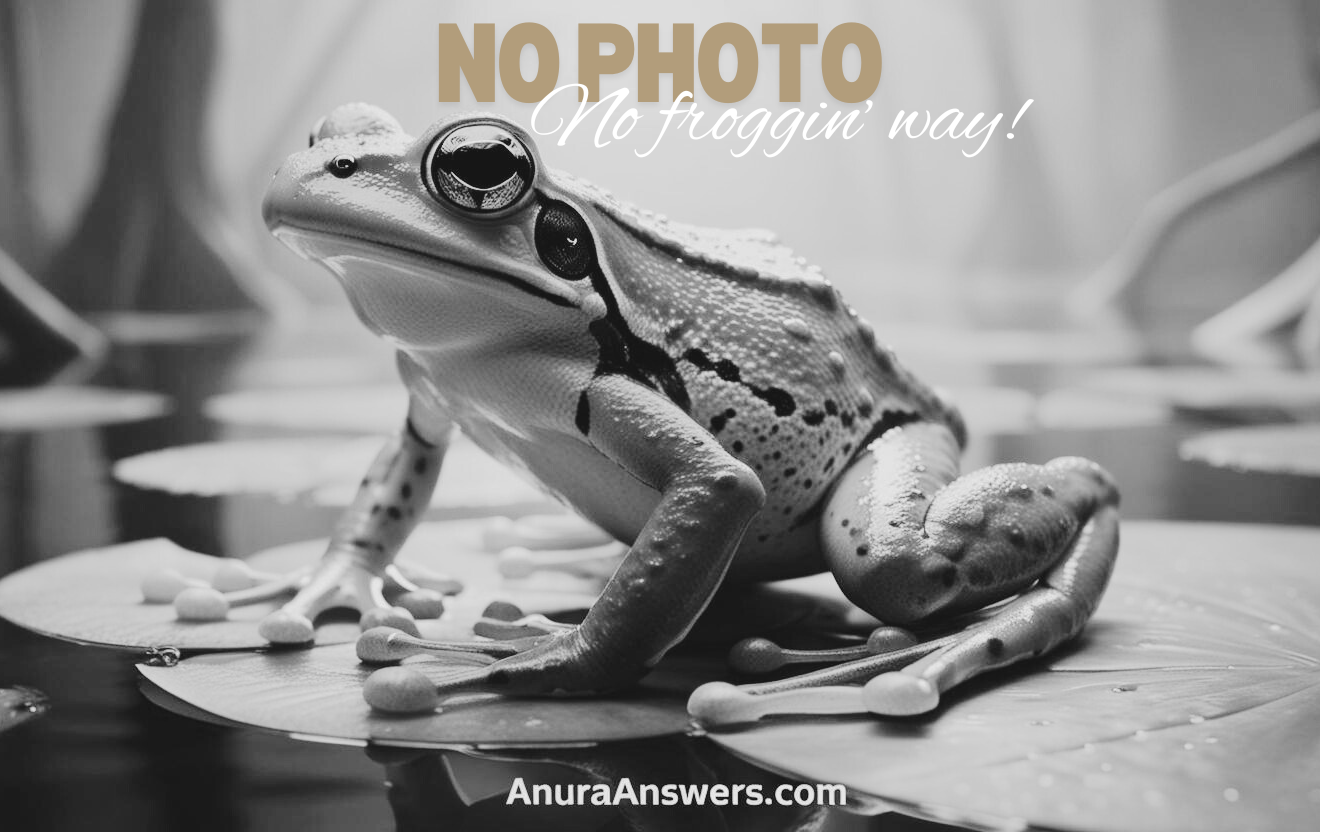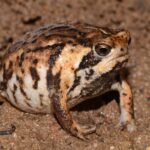Batrachyla fitzroya: The Secret of Patagonia’s Forest Frogs#
In the misty, temperate forests of Patagonia, hidden amongst tangles of ferns and draped vines, resides an elusive amphibian whose discovery has opened a window into a fascinating world of ecological mystery—Batrachyla fitzroya, commonly known as Fitzroya’s frog. Named in homage to the towering Fitzroya cypress trees it inhabits, this tiny frog largely evades the public eye yet plays a pivotal role in its delicate woodland ecosystem.
Officially described by herpetologists in 1994, Batrachyla fitzroya continues to captivate biologists and nature enthusiasts alike with its cryptic behavior and surprisingly specialized habitat. While the Fitzroya frog is not as vividly colorful or striking as some of its more tropical relatives, it compensates with nuanced adaptations and intriguing secrets woven intricately throughout its biology and behaviors.
Taxonomy and Classification#
Batrachyla fitzroya belongs to the family Batrachylidae, part of a relatively small but fascinating group of frogs collectively known as southern frogs. These are typically found along cool, sheltered temperate ecosystems throughout southern South America, particularly in Chile and Argentina. The genus Batrachyla, to which Fitzroya’s frog belongs, currently comprises a handful of species renowned for their cryptic nature and ecologically specialized lifestyles.
Within this select group, Batrachyla fitzroya stands apart due to its highly restricted range and habitat specialization, closely associated with mature southern temperate forests, dominated notably by giant Fitzroya cypress trees—ancient giants renowned for their longevity and ecological significance in Patagonia.
Natural Habitat#
The Fitzroya frog occupies a specialized niche in temperate rainforest habitats, occupying cool, humid locations within the Valdivian forests of southern Chile. While its range remains notably limited geographically, primarily recorded in Los Lagos and Aysen regions, the species is often closely linked to ancient Fitzroya (Fitzroya cupressoides) stands. These impressive trees, some believed to be among the oldest living specimens in South America, create a habitat uniquely suited to the frogs’ lifestyle.
Within this forest realm, Batrachyla fitzroya lives scattered across shaded, moss-laden logs, boggy ground, or tucked within roots and dense leaf litter. These areas, perpetually moist and relatively stable in temperature due to forest canopies, offer essential refuge. Their attachment to such specific conditions places this amphibian firmly among the indicator species whose continued presence signals the ecological health and stability of their forest communities.
An Intimate Dance with Their Environment#
The Fitzroya’s frog is well-adapted to the humid microclimate that the ancient Fitzroya cypress woods provide. These amphibians take advantage of the abundant leaf litter, fallen logs, and thick moss carpets that retain moisture and provide suitable homes for prey and shelter against predators—a delicate choreography of adaptation that demonstrates their vital ecological ties.
Physical Characteristics#
At first glance, the Fitzroya frog may seem inconspicuous, even humble, blending seamlessly into its misty, moss-covered domain. Adult individuals typically measure between 2.5 to 4 centimeters in length—a small, slender silhouette suited ideally for a secretive lifestyle. Their bodies, subtly patterned in browns, greens, and grays reminiscent of lichen-covered bark or moist moss beds, grant superb camouflage within their arboreal home.
Closer examination unveils a host of marvelous adaptations: their skin is slightly granulated, aiding them significantly in moisture retention. Their limbs exhibit fine webbing, particularly between their rear toes, optimized for climbing and navigating moist, slippery surfaces in their dimly lit forest environment. Among forest inhabitants accustomed to a palette of muted colors and subtle beauty, Batrachyla fitzroya exemplifies evolutionary adaptation at its finest, avoiding notice from unwelcome eyes.
Behavior and Life Cycle#
Feeding Habits#
Fitzroya frogs are stealthy, efficient predators in miniature. During the cool, damp evenings that cloak their forest home, these frogs emerge silently to pursue food. They prey primarily upon small invertebrates, feasting on ants, beetles, spiders, and tiny flies, capturing prey swiftly with expertly timed lunges facilitated by their long, slender tongues. Their feeding behaviors, precise and efficient, reflect keen hunting strategies fine-tuned over millions of years.
Breeding and Reproduction#
Interestingly, Fitzroya frogs have unique and intriguing breeding behaviors. As the temperate waters rise and seasonal rains stimulate their reproductive cycles, males announce their readiness to mate with gentle yet audible calling choruses. Their calls—delicate, rhythmic chirp-like serenades echoing softly through the thick vegetation—reach out into the misty night, beckoning potential mates to quiet rendezvous amid the leafy refuge of their forest world.
Females lay their gelatinous clusters of eggs in carefully chosen pools of water, mossy cavities, or shallow ponds created by heavy rains, creating safe nurseries for embryonic development. Within these safe havens, the tiny tadpoles of Batrachyla fitzroya quickly emerge and progress through their delicate metamorphosis. The uniquely cool and moisture-rich environs ensure rapid growth and survival, giving the species a critical adaptive advantage.
Ecological Role#
Fitzroya frogs are more than mere hidden gems of Patagonia’s temperate rainforest; they embody a vital link within this unique ecosystem. Serving as both predator and prey, these diminutive frogs help maintain ecological balance, regulating insect populations while providing critical nutrients to predators like birds, snakes, and larger amphibians. Their presence serves as an early indicator of environmental health, reflecting moisture and temperature regimes integral to sustaining these rare, ancient forest habitats.
Moreover, their reliance on pristine forest habitats makes them particularly sensitive bioindicators. Scientists increasingly highlight this frog’s significance as a key warning system that draws attention towards broader environmental concerns, from climate shifts to habitat fragmentation.
Threats and Conservation Status#
Unfortunately, the very specificity of its habitat also renders the Fitzroya frog vulnerable. The Valdivian temperate rainforests, crucial to the species’ existence, face pronounced threats such as logging, land-use change, invasive species, and climate-altered rainfall patterns. Fragmentation of their limited habitat disrupts breeding and foraging behaviors, resulting in worrying population declines.
Currently, the International Union for Conservation of Nature (IUCN) lists Batrachyla fitzroya as “Near Threatened.” Although not approaching imminent extinction at present, ongoing loss and modification of primary forest habitats underscore the urgency of protective action. Conservationists emphasize habitat protection and restoration initiatives that highlight the crucial need for safeguarding these sensitive frogs and the ancient forests they call home.
Cultural and Scientific Significance#
Although relatively unknown outside scientific circles, the Fitzroya frog quietly symbolizes the interconnectedness of Patagonia’s complex forest ecosystems. Biodiversity researchers, focusing on this species, gain insight into larger environmental patterns and threats faced by other vulnerable forest inhabitants. Studies involving Batrachyla fitzroya have further helped establish foundational knowledge in understanding amphibian sensitivities to climatic changes, making them focal points of ecological monitoring programs.
Culturally, the ancient Fitzroya forests in Chile hold spiritual and historical significance—with native legends tying life, time, and ancestry directly to the vitality of these forests. By extension, the subtle yet critical presence of the Fitzroya frog speaks volumes between tradition, culture, and modern conservation ethics.
Conclusion: Preserving the Voices of Patagonia’s Secretive Frogs#
Beneath an emerald canopy of ancient forests, hidden from casual observation, the Fitzroya frog persists—its life a gentle tale told in soft calls and subtle movements. To safeguard its survival, admirers of wild nature, conservation advocates, and environmental researchers must unite to protect the precious forests essential to their existence. After all, protecting Fitzroya’s frog means safeguarding an entire ecosystem, preserving the delicate interplay between ancient forest giants, humble amphibians, and future generations seeking to witness Patagonia’s natural wonders.
As you listen to Patagonia’s whispered narratives—the sound of dripping water echoing through damp forests or the subtle melodies of small frog choruses—you may just find yourself enchanted by Batrachyla fitzroya’s hidden world, becoming part of the collective voice calling for their continued conservation.







